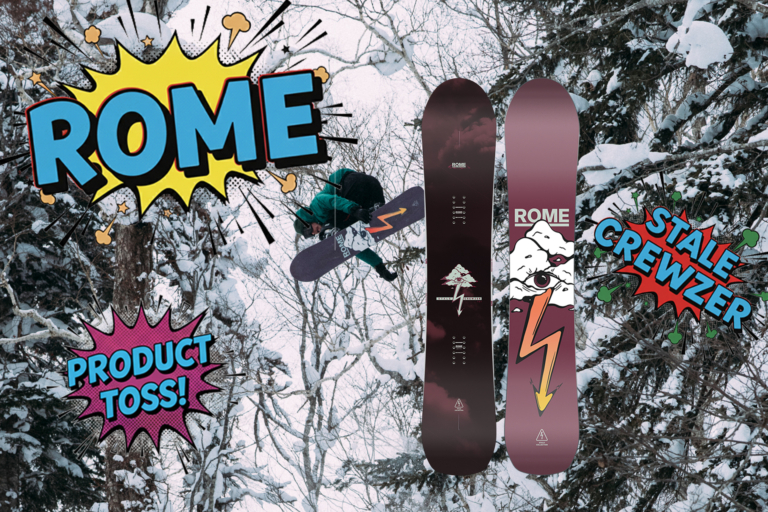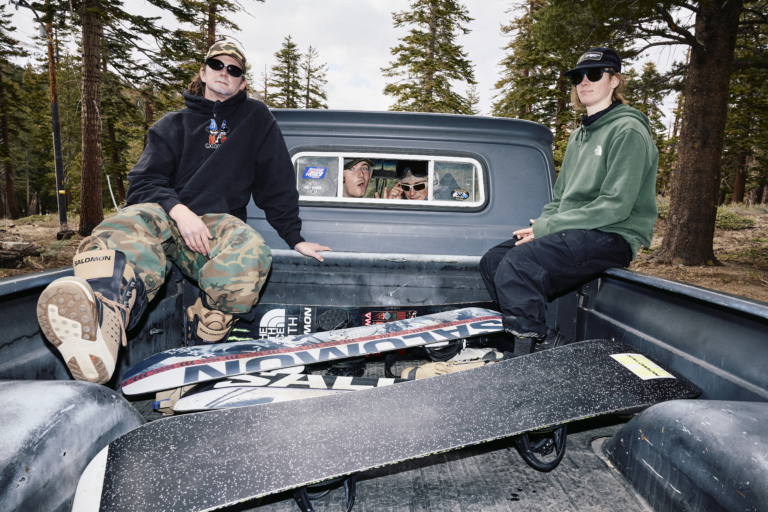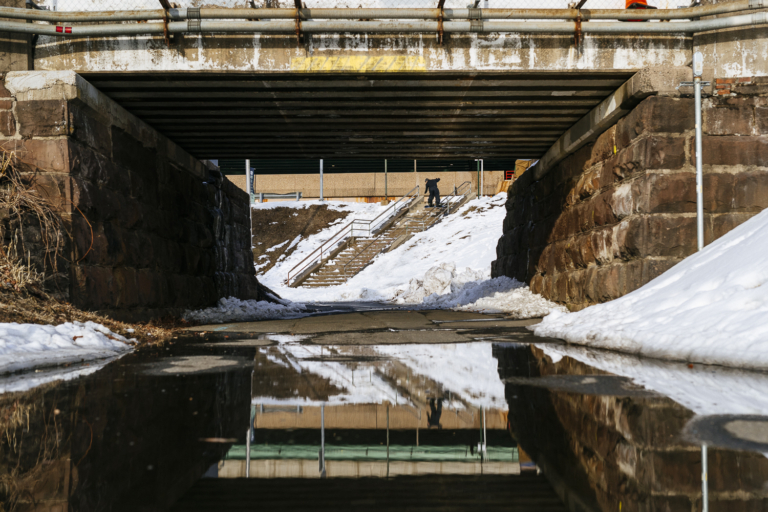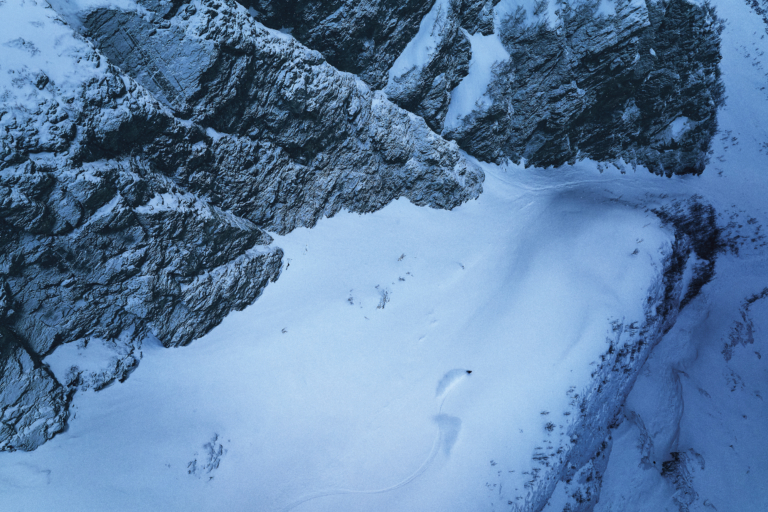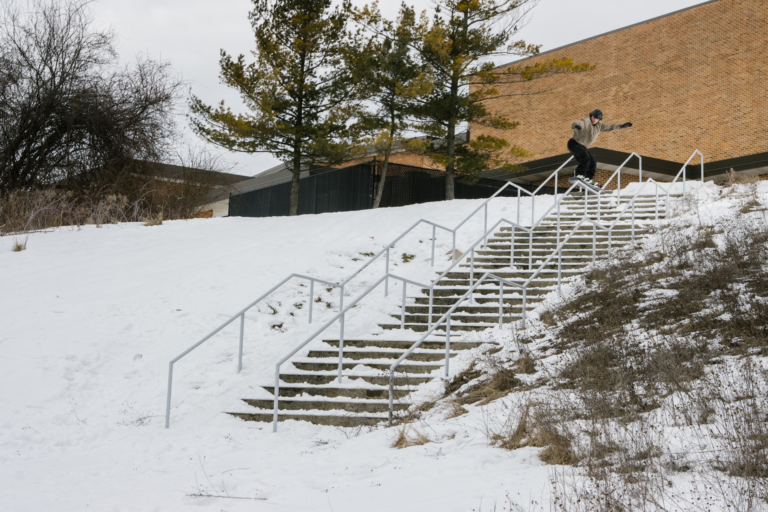
Chuck Barfoot lives in a trailer in Southern California. His balding head reveals a scalp tanned by countless days in the surf and on his skateboard, protected only by a shaggy tuft of gray hair. There is a perpetual smile on his face, regularly interrupted by his contagious outbreaks of cackling laughter. He is 62-years-old, an age seldom associated with a snowboarder. But Chuck was one of the first. In 1980 he began crafting some of the first snowboards in the world at the same workbench as fellow pioneer Tom Sims, thus bringing Barfoot Snoboards into existence. Note the absence of the W, because he will definitely remind you of that.
Many things have changed in those 30 years; the explosive popularity of snowboarding as a mainstream “sport”, the subsequent corporate growth and decade-long hiatus when the lights went dark in the Barfoot factory. Yet, there has been one constant in Chuck’s life — his love and complete obsession with the snowboarding lifestyle.
Growing up on Long Beach Island in New Jersey during the 1960s, a young Barfoot got his first board riding experience in the ocean. “It all started and stems from my surfing. I saw these guys surfing when I was 11-years-old and was totally hooked. I started designing fins and boards and some guys I knew shaped a board for me. I was 13 when I got my first custom board.” This was also his first introduction to Tom Sims. “We had met surfing in my hometown of Beach Haven, New Jersey during the late 60s and became friends.”
Then came the migration west. Fully embedded in the Santa Barbara surf scene, Chuck made skateboards for Tom and the Sims team throughout the 1970s. At the end of the decade he designed and built his first snowboard without having even ridden one. “I made a fiberglass fin layup, it had camber in the bottom, a bit of tail kick and I put a rubber strap with clear grip tape on it.” He took his first turns in the fall of 1978, and a lifelong addiction ensued.

Since those early years Chuck has been entirely committed to standing sideways, no matter the medium. “Surfing, surfing on snow and surfing on concrete is what my whole life has been. It is my life 24/7. All I think about are boards, board designs and riding.” The Barfoot name became synonymous with quality and innovation and it is widely credited with the proliferation of the twin tip, early rocker and multi-camber profiles, and provided the catalyst for Canadian freestyle snowboarding with the support of Calgary legend Ken Achenbach.
First and foremost Chuck is a rider from the heart, which made it difficult for Barfoot Snoboards to compete with the mass-market mindset as snowboarding entered its lucrative growth stage with the approaching Millennium. Even the devoted can become disillusioned.
“I snowboard and skate to keep a smile on my face and my friends’ faces. It comes from my soul. Snowboarding started getting so political, and to me the contest scene was total bullshit. I got so tired of the politics that it really disheartened me. I was losing people because other companies were buying my riders off, and it hurt my heart. My riders were like family to me. All those things combined, I just said screw it. It would be like going surfing and being pissed off. Why the hell were you even in the water?”
Thus, Barfoot Snoboards went into remission in 2004, marking a period when Chuck would focus on shaping surfboards and skateboards. But those years also sparked a paradigm shift in snowboarding, “Where people are looking to be more soulful and enjoy what they’re doing,” as Chuck states. “People started getting a hold of me through the Internet saying, ‘You’ve got to make boards again.’ I’m realizing there are a lot of people that were really loyal to me. That put a smile back on my face.”

So after a decade hiatus, Chuck, alongside his longtime business partner Ernie DeLost have reheated the presses and opened fresh containers of epoxy for a new generation of Barfoot Snoboards. “It’s really started all over again because I had lost that for quite a few years. Now we can take the concepts we had earlier and make boards that rip shit. We had the concepts right, but we just didn’t have the materials. This is like a dream come true.”
At the end of the day, what matters most to Chuck is staying true to himself and sharing the passion that has defined his entire life. “We all need to make our money and stuff. I’ve been almost bankrupt several times because it wasn’t really a business. I just hung on to what made me who I am. Now coming back around, it can be a business and it can make money. I’m not going to be some millionaire, but as long as I can ride with my buddies until I can’t ride anymore, I’m going to be stoked as shit.”
“That’s all I’ve ever wanted to do.”

